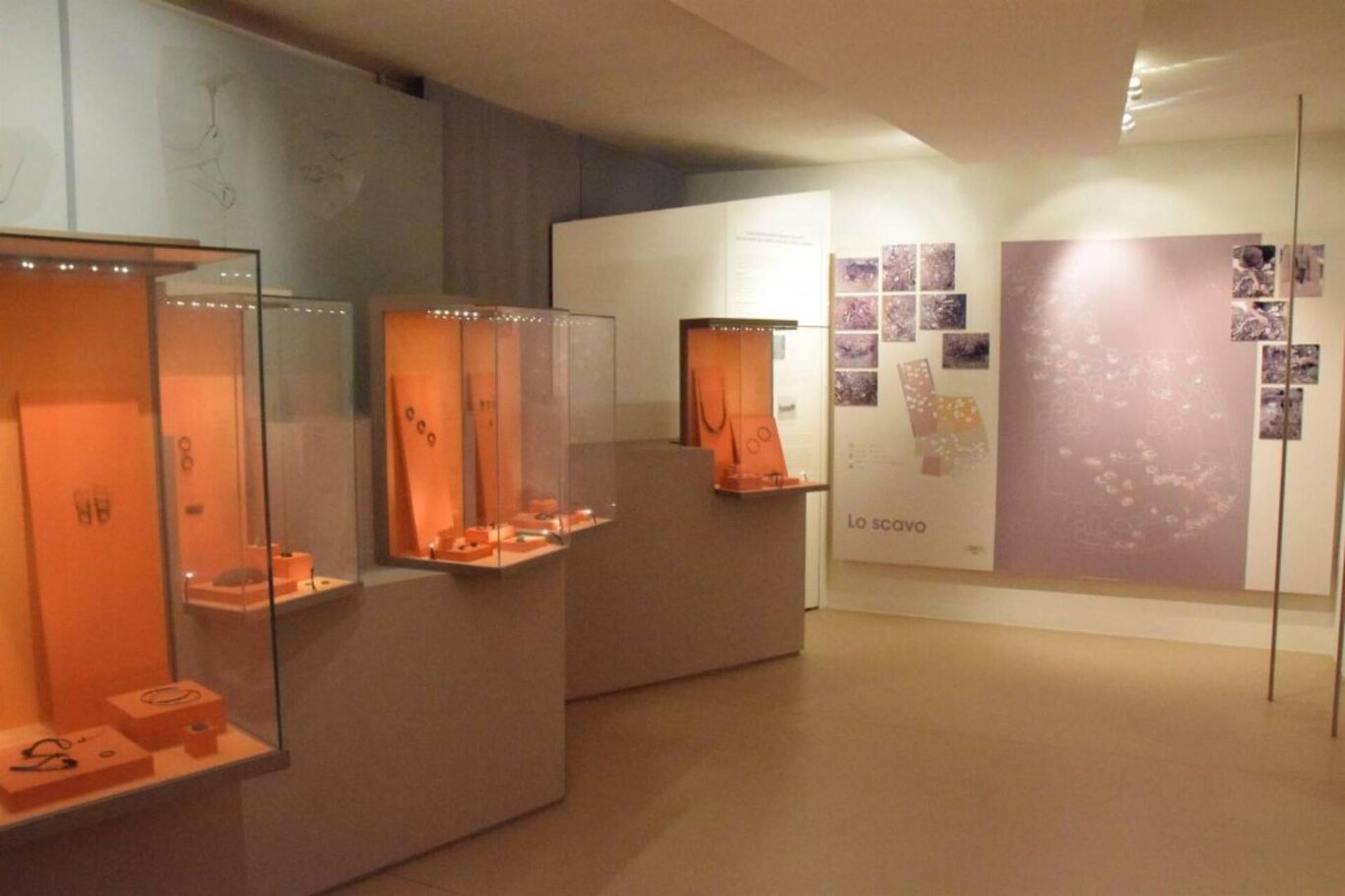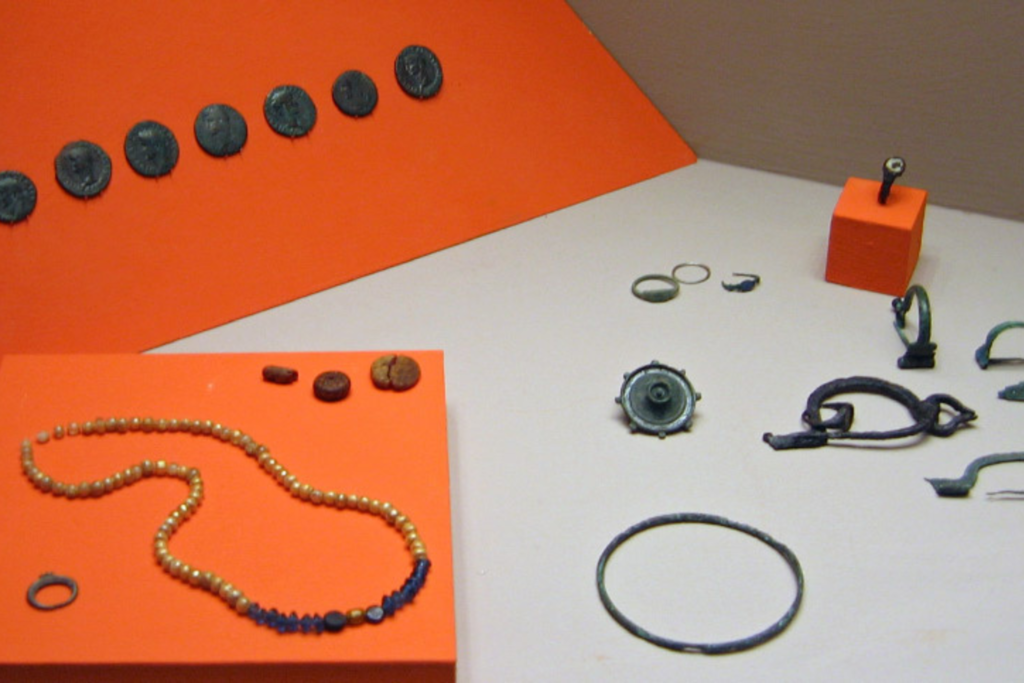The excavations have uncovered over 80 burials, unique in their kind, all inhumations in full earth in oval-shaped pits. The deceased are seated curled up with their backs against the wall of the tomb and their heads facing east, in accordance with a custom typical of the Bronze Age (from 3500 BC to about 1200 BC), and thus very different from the practice typically used during the Roman period.
The funerary goods from the San Donato Necropolis displayed in the Museum consist of clothing, ornamentation, and everyday items, and almost always also include one or more coins. In female tombs, the bronze, silver, and glass ornaments are numerous and indicate the social status of the deceased. Famous are the silver earrings known as "B-shaped" which, due to their very particular design, have been chosen as the symbol of the Museum. The male funerary equipment is simpler, featuring the famous folding pocket knives used in daily tasks.
In 2001, an exceptional discovery was made of a particularly special burial alongside the human ones: an ox, two years old, probably sacrificed for some propitiatory rite and subsequently buried, in the same era as the other humans, with all honors. Finally, it is noteworthy that there is an almost total absence of individuals of young age, with only two out of eighty burials found so far, and the particular physical characteristics of these ancient Romans who were particularly strong and robust.


